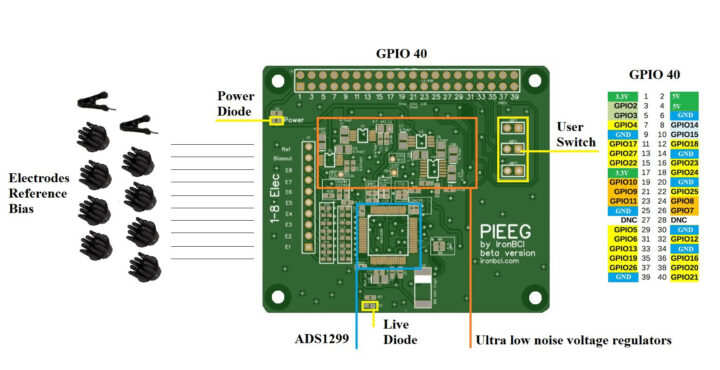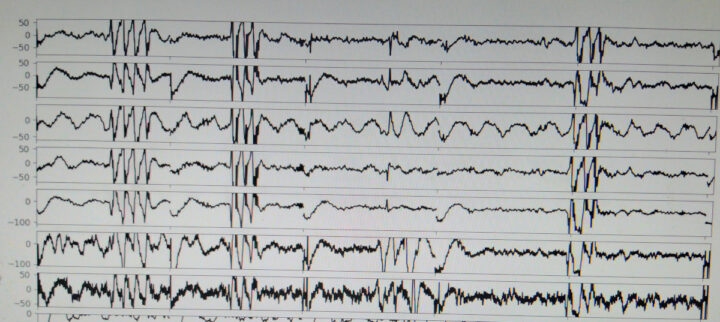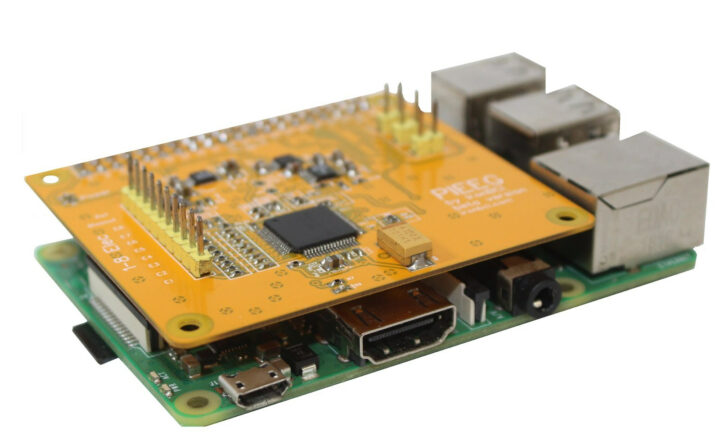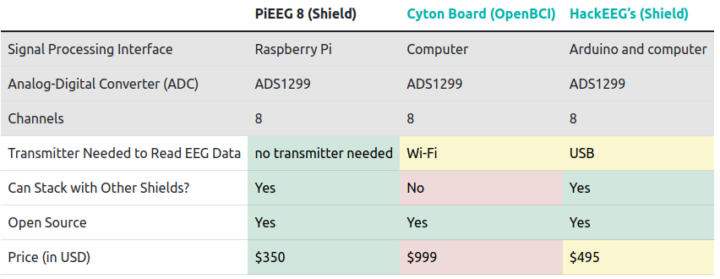PiEEG is an open-source hardware Raspberry Pi shield that measures electroencephalography (EEG), electromyography (EMG), and electrocardiography (ECG) bio-signals and provides a brain-computer interface to applications or robots for gaming, entertainment, sports, health, etc…
Ildar Rakhmatulin, a Research Associate at Heriot-Watt University in Edinburgh, is passionate about open-source brain-computer interfaces and first created the IronBCI project based on ADS1299 and STM32 and published a research paper entitled “Low-cost brain computer interface for everyday use” about his work. But cost increases related to the semiconductors shortage of recent years meant the price for his “low-cost” project shot up to over $1,000. So he went back to the drawing board and created the PiEEG shield for Raspberry Pi now available on Crowd Supply.
PiEEG shield specifications:
- ADC – Texas Instruments ADS1299 Analog-to-Digital Converter for biopotential measurements
- Supported SBCs – Raspberry Pi 3 or 4, and boards with the same 40-pin GPIO header.
- Host interface – 40-pin GPIO header with SPI protocol with a frequency from 250 SPS to 16 kSPS and a resolution of 24 bits per channel
- 8x channels for connecting wet or dry electrodes
- Programmable signal gain – 1, 2, 4, 6, 8, 12, 24
- Ability to measure impedance
- Common-Mode Rejection Ratio CMRR – 120
- Internal noise – 0.4 μV
- External noise – 0.8 μV
- Signal-to-noise ratio (SNR) – 130 dB
- Expansion
- 3x free pins for connecting external objects (ground and Raspberry Pi channel)
- 33x spare pins from the Raspberry Pi GPIO can be used for various tasks, like connecting external devices
- Misc – LEDs for power indication and ADS1299 connection indication
 You’d just need to insert the shield into a Raspberry Pi 3/4 SBC, connect up to eight electrodes to capture signals from the subject and rely on the Python, C, C++ code samples to read data from the command line or a graphical user interface. You’ll find those along with PDF schematics and Gerber, and some documentation on GitHub. There’s also a scientific paper entitled “Raspberry PI Shield – for measure EEG (PIEEG)” for further insights into how this all works.
You’d just need to insert the shield into a Raspberry Pi 3/4 SBC, connect up to eight electrodes to capture signals from the subject and rely on the Python, C, C++ code samples to read data from the command line or a graphical user interface. You’ll find those along with PDF schematics and Gerber, and some documentation on GitHub. There’s also a scientific paper entitled “Raspberry PI Shield – for measure EEG (PIEEG)” for further insights into how this all works.

We’ve previously written about other hardware capture EEG or other vitals for BCI, so the PiEEG shield adds to the list of other solutions such as HEGDuino V2, HackEEG Arduino shield, E3K all-in-one wireless bio-sensing platform, and others.
Ildar compared his design to the HackEEG and the Cyton board from openHCI, all three open-source hardware designs based on the same ADS1299 ADC.
The HackEEG used to be offered for $335 when it launched in 2019, but times have changed, and it now costs $495. At $350 with 8 channels, the PiEEG is the most cost-effective BCI platform out of the three, and you could even pledge $250 for a model with just 4 channels. Prices include worldwide shipping, and deliveries are scheduled for November 29, 2023 for the 4-channel PiEEG shield, and April 29, 2024, or over one year from now, for the 8-channel variant.

Jean-Luc started CNX Software in 2010 as a part-time endeavor, before quitting his job as a software engineering manager, and starting to write daily news, and reviews full time later in 2011.
Support CNX Software! Donate via cryptocurrencies, become a Patron on Patreon, or purchase goods on Amazon or Aliexpress






